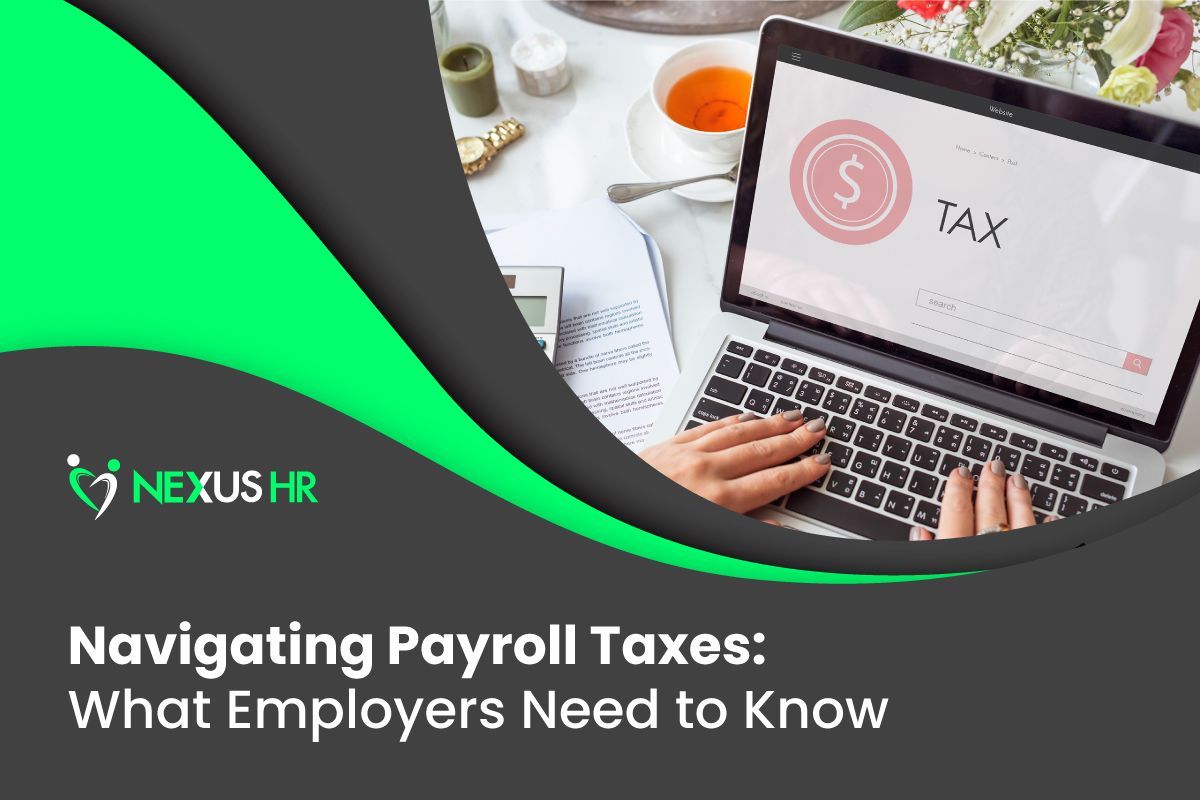Get in touch
877-922-5867
Info@Nexushr.com
877-922-5867
How to Manage Time-Off Requests Like a (Good) Boss
Everyone needs a break from work, especially when one in three Americans admits that work negatively impacts their mental health.
According to industrial/organizational psychologist
Dr. Charlotte Fritz, taking breaks can improve one’s mood and performance capacity.
“Mentally disengaging from work—not thinking about work, not checking your emails at home, not being on-call—we find that it’s definitely beneficial for people’s well-being,”
says Dr. Fritz.
It is every employee’s right to take time off work, and, as a good employer, it’s your responsibility they’re able to do so.
Things to Consider When Managing Time-Off Requests

A report by The Washington Post shows that, according to the U.S. Bureau of Labor Statistics (BLS), U.S. employees are around half as likely to be taking a vacation now (1.7%) than they were 40 years ago (3.3%).
The data didn’t show fewer paid time off (PTO) days; workers still had access to them. They just weren’t utilizing them.
Are your team members taking time off work to recharge? Do they feel safe asking for vacation? Are they taking
too much time off?
Here are a few things you need to keep in mind to manage time-off requests (and your team) better:
Develop a Comprehensive Time-Off Policy

While U.S. employees are entitled to up to 12 weeks of unpaid leaves through the Family and Medical Leave Act (FMLA), no federal law regulates paid time off. It’s up to the state and employers like you to set a fair, comprehensive, and inclusive time-off policy that addresses the needs of your workforce.
With the help of your management team and
HR department, develop your company’s time-off rules and processes. They should ideally answer the following questions:
- How much time off are your employees entitled to?
- How should employees submit their time-off requests?
- When can they request time off work?
- When can’t they request time off?
- How much advance notice does management need for time-off requests?
- How often can employees request time off?
- What happens when there are overlapping time-off requests?
Technology is a great way to streamline, track, and manage your company’s time-off policy without dealing with paper forms, binders, and filing cabinets. Platforms like
PrismHR and
Timeco conveniently keep your entire team’s leave requests in one easily accessible place.
Clearly Communicate Your Policy

Transparency and open communication are essential to successfully implementing your company’s time-off policy. If you already have one in place, your employees need to know what it is and its details.
When onboarding new employees into your company, set aside time to talk about your time-off policy. Clearly explain it using situational examples and answering questions the new hires may have.
Adding a brief overview of your time-off policy on
job descriptions during the recruitment phase can also show potential employees the perks of working for your organization and convince them to join your team.
Address Job Insecurity in the Workplace

Your team members may have accrued plenty of PTO hours but may be hesitant about using them.
Amber Clayton, Senior Director of Knowledge Center Operations of The Society for Human Resource Management (SHRM), calls this a matter of job security.
“If they’re not there and somebody else is doing the work now, they look like they’re expendable,” said Clayton. “Or they feel like it’s going to be frowned upon from their employer if they take off.”
If your team members are hesitant to take time off because they think it makes them appear replaceable and less-than-dedicated to their jobs, it’s time you step in and address the issue of job insecurity in your organization.
Establish a workplace culture that encourages healthy work practices. Emphasize that taking breaks and time off are crucial to performing better at work in the long run.
Help Your Members Manage Their Workload

According to a Project: Time Off study, the most common reason employees avoid going on vacation is the fear of having a massive pile of work waiting for them when they return.
Unfortunately, many employees think the staggering workload after a week-long break is enough to consider not going on vacation at all.
No one should feel like they can’t step away from work for a break. As a leader, you have the authority and influence to mitigate this.
Software company
Replicon suggests implementing a three-day grace period when employees return from vacation. The company recommends prioritizing time-sensitive tasks for the first three days, and allowing them to catch up on the rest of the their tasks at a more relaxed pace.
You can also hire reliable part-time employees or temporary staff whom you can call to help fill in when your team members need to take time off.
Read More:
Hiring Part-Time vs. Full-Time Employees: Which Is Better?
Let Your Team Know You Can Say No

Unfortunately, you can’t approve every single time-off request you get. Your business needs to continue operating, and it’s important your team understands this clearly.
According to Felix Roy of
Sherweb’s Human Resources team, the only acceptable reason to deny an employee’s time-off request is when it affects business needs.
If approving the time-off requests means being understaffed, failing to meet deliverables and deadlines, being unable to ensure adequate service to clients, failing to attend critical meetings, and going against the set time-off policy, you may have to deny them.
However, as a leader, you must remember that you have a relationship with your team members. You not only care about the business’s needs, you also care about theirs.
Go above and beyond to help employees get the time off they deserve while sticking to your policies and ensuring sufficient coverage. If you still can’t make things work after that, have a conversation with your employee. Let them know you need to deny the time-off request and why.
Manage Time-Off Requests Efficiently and Effectively with Nexus HR

Tracking, assessing, and staying on top of your workforce’s time-off requests is no easy feat. And if you want to do it most effectively and efficiently, you need a reliable team of HR experts to help you out. If you don’t have one yet, Nexus HR is ready to help!
From building a time-off policy and integrating it into your
payroll system, to implementing it in your operations, Nexus HR has got you covered! Fully equipped with the latest technology and industry experience, we’re here to help streamline time-off processes for your team and simplify PTO approvals and denials for you.











